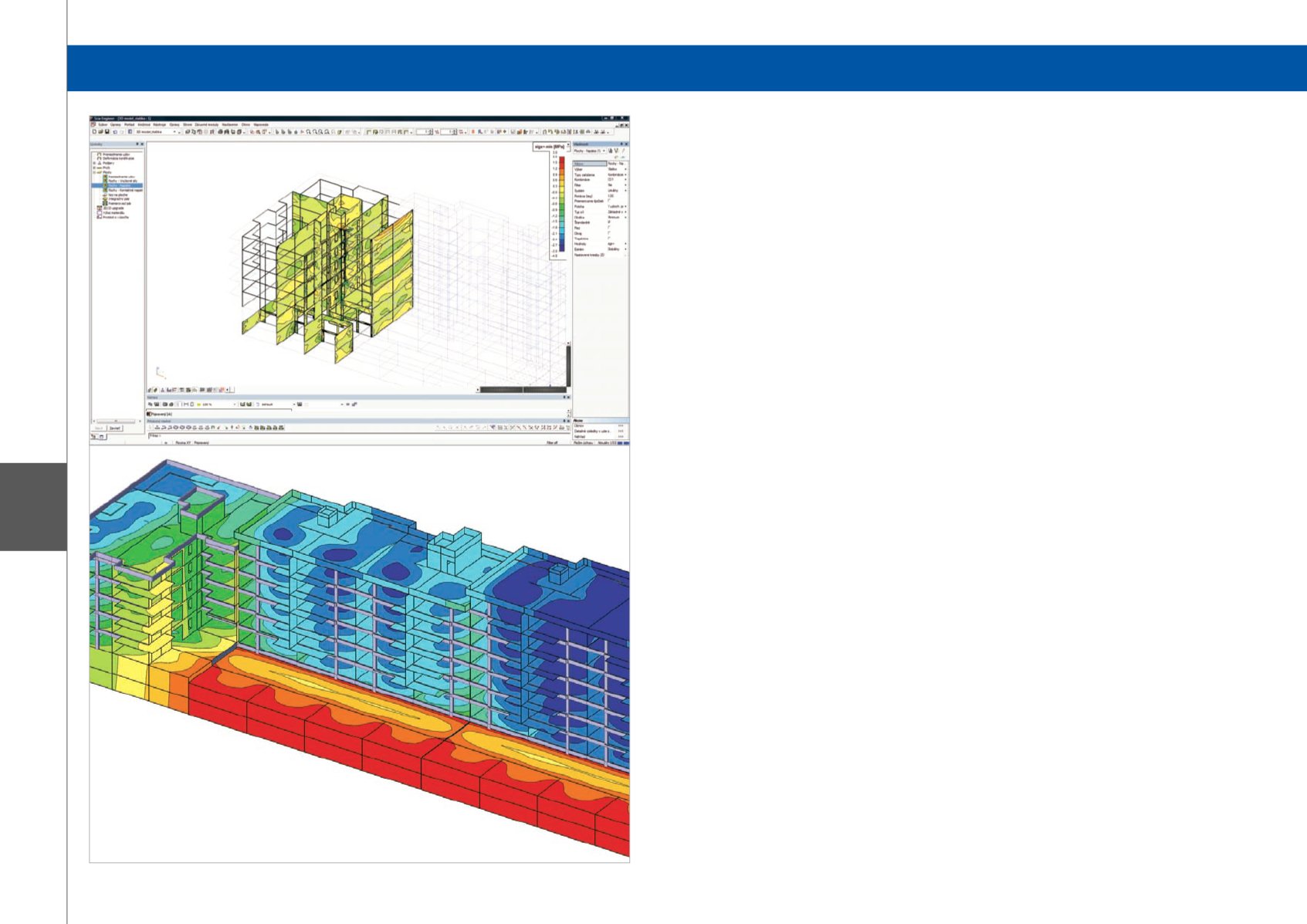
96
X1
Category 1: Buildings
Introduction
This project is a continuation of an existing home-
building initiative in a Bratislava location. The building
is divided into three parts, with each having a different
number of storeys. The ground plan dimensions of the
whole object are 96 m x 25 m and it is divided into five
dilatation units. The maximal height of the building is
28.8 m.
There are projected flats (third-storey and higher),
offices (second-storey), shops (first-storey) and a car
parking facility (two sub-levels) within this object.
The motivation for this project is to have all the roofs
designed as “greenery” so that the roof layers’ weight
generates the load case on the roofs’ reinforced
concrete slab.
Geological conditions
According to the results of the geological examination
of the foundation’s soil, the following points were
determined: the surface layer is created by dirt-sand
with a clay addition, underneath which there is a gravel
layer, and then at a depth of 13 m is a layer of neogen
clay. Underground water was found at a 2.5 - 3.0 m
depth during the geological examination. The water is in
direct relation to the Danube river.
Load bearing system
The main load bearing system is a combination of
reinforced concrete walls, columns, communication
cores and slabs. The car parking facility has two
underground storeys comprising reinforced concrete
box with a foundation slab. The thickness of the
reinforced concrete walls is 200 mm. There are various
types of column dimensions. The thickness of the typical
slabs is 200 mm, while for the roof slabs it is 250 mm.
The foundation slab has three different thicknesses –
900 mm, 800 mm and 700 mm.
Use of Scia Engineer software
The calculation consists of static analysis regarding
the vertical load, wind load and dynamic loads. For the
static and dynamic (seismic) solutions for the structure,
a 3D model was created for the whole object with
Scia Engineer software using finite element method
calculations. The loads were calculated according to
Eurocode 1.
The seismic load is considered as a standard designed
spectrum of seismic response according to Eurocode 8.
The seismic response of the structure was calculated
using modal analysis, which consists of the eigen
vectors solution and then the internal forces solution for
each load case.
Scia module Soilin was used for the calculation of the
interaction of the foundation soil and reinforced concrete
structure.
Separate calculations were performed for the typical
floor slabs. A particular model was created for each
slab, while the internal forces and deflections with creep
were calculated.
Scia software helped us to decide on the foundation. In
just a short time it is possible to make adjustments and
to calculate the response of the concrete structure.
Polyfunctional Building - Bratislava, Slovakia
Software: Scia Engineer


